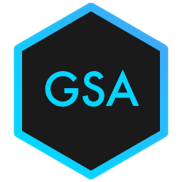# Response spectra
Basic definition
# Name
The name is used only as a label for the response spectrum.
# Spectrum type
The user has a choice of the type of spectrum to use. This can be code defined to one of
- ASCE 7-05
- ASCE 7-10
- AS 1170-2007
- Eurocode 8 : 1994
- Eurocode 8 : 2003 (draft)
- Eurocode 8 : 2004
- FEMA 356
- GB 50011-2001
- GB 50011-2010
- IBC 2000
- IBC 2006 (ASCE 7-05)
- IBC 2009 (ASCE 7-05)
- IBC 2015 (ASCE 7-10)
- IS 1893 (Part 1) : 2002
- Ordinanza PCM 3274
- NBCC 2015
- UBC 1994
- UBC 1997
or
- User defined
Depending on the spectrum type a different set of information is required to define the spectrum. The spectra are defined via the Response Spectrum Wizard.
# Response spectrum wizard
The wizard takes the user through the following steps.
- Select spectrum type
For code spectra
- Code specific data to define spectrum
- Derived code specific values
- Damping associated with the spectrum
- Spectrum values
For user defined spectra
- Spectrum values
# Damping
CQC and other double sum combination methods require a damping value to establish the coupling coefficients between modal responses. The default option is constant 5% damping, but this can be changed to code specified damping, modal damping values or a table of damping values.
| No adjustment from code | |
| Newmark-Hall : 50th percentile | |
| Newmark-Hall : 84th percentile | |
| ISO 19901-2 | |
| Eurocode 8 |
